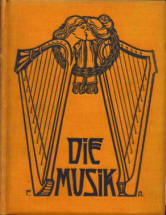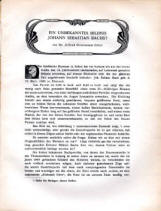The Portrait in Erfurt Alleged to Depict Bach
the Weimar Concertmeister
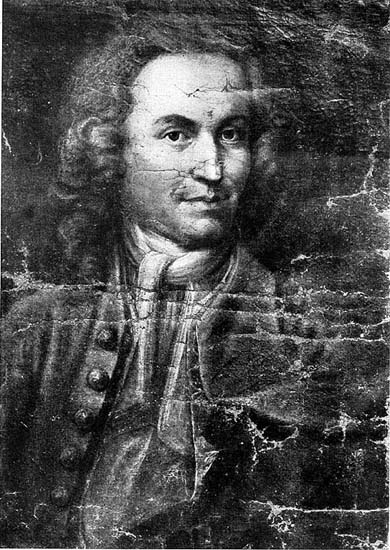
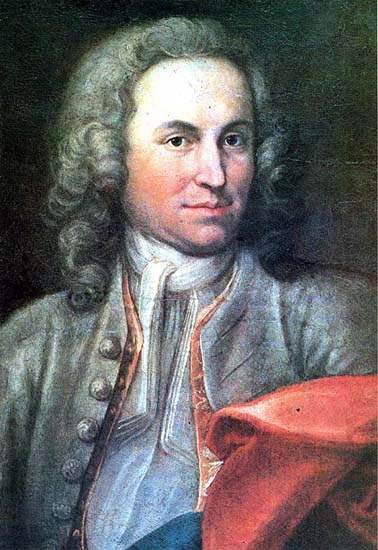
Before the 1907 Restoration and As It Looked in 1985
Is this young man really Johann Sebastian Bach?
excerpts from mr. Towe's research (= 7 webpages): the full research
now available via
//bach-cantatas.com/thefaceofbach/
Two of the most widely reproduced portraits of Bach are widely regarded with suspicion. Those two portraits are, first, the painting now in the Bach Museum in Eisenach, that is attributed to ]. ]. Ihle and is alleged to depict Johann Sebastian Bach during his tenure as Capellmeister to Prince Leopold von Anhalt-Cöthen, between 1717 and 1723, and, second, the portrait attributed to the Weimar Court Painter, ]. E. Rentsch, the Elder (d. 1723), now in the Angermuseum in Erfurt, that is alleged to depict Johann Sebastian Bach during the years that he spent in Weimar, as Court Organist and Concertmeister, between 1708 and 1717
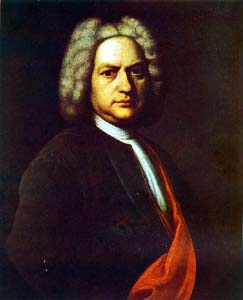
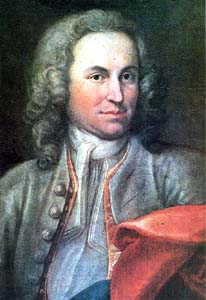 .
.
The Erfurt Portrait is yet another Bach portrait that I have known since my childhood. It was one of the first "alternate" portraits that I saw. I encountered it for the first time when I was about 12. Esther Duffy, the then Performing Arts Librarian at the Greenwich Public Library, bent the rules and allowed me to borrow records, even though I was nowhere near the minimum age of 16. It is a kindness for which I shall always be grateful. I recall that one of the first recordings I borrowed was Agi Jambor's two record set of the Seven Toccatas and Four Fantasias (Capitol SBR-8354), for over a decade the first and only recording of all of the Toccatas. The liner notes contained this image; it was my first encounter with what is often the first image that pops into peoples' minds when you speak the words, "Bach portrait":
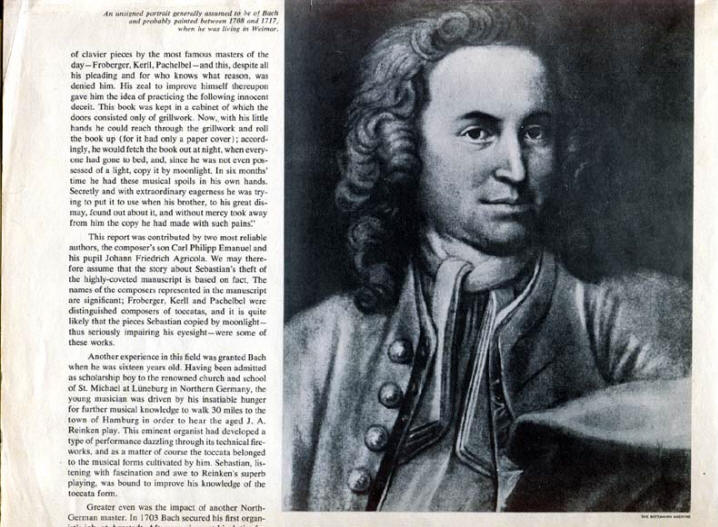
Notice the guarded and carefully worded caption: "An unsigned portrait generally assumed to be of Bach and probably painted between 1708 and 1717, when he was living in Weimar." The portrait puzzled me for other reasons, too. It was the first image of Bach that I saw that did not fit the "white wigged" image of the 1746 and the 1748 Haussmann Portraits, the Volbach Portrait, and all of the images derived from them. It was also the first time that it occurred to me that not all of the images that I had seen that purported to show the face of Johann Sebastian Bach were actually or necessarily "as billed". In the 40 years since I first saw that reproduction of the Erfurt Portrait, this image of Bach has become particularly well known to the world at large. It is the portrait almost invariably selected when a portrait of the composer is needed for the booklet that accompanies a recording of "early" works by Johann Sebastian Bach.
But is the man in the Erfurt Portrait actually Johann Sebastian Bach?
from
PAGE 2 [DW: since many pictures were missing on the waybackweb, only some textfragments in which the author claims to have uncovered a pious fraud...J
The harsh reality of my discovery sank in slowly, but it sank in bitterly. I had hoped that locating the photograph of the unrestored painting would enable me to remove doubt, but I had hoped for a different result when the doubt was removed. It is a bitter pill, but it is one that must be swallowed. Sadly, the Erfurt Portrait is the product of deception, a carefully considered and carefully calculated deception. Its "discoverers" and its "restorers" sought to capitalize on a fortuitous opportunity, and, after careful assessment of the available knowledge, they capitalized on the opportunity, secure in the belief that they would get away with it. And until now, they have gotten away with it
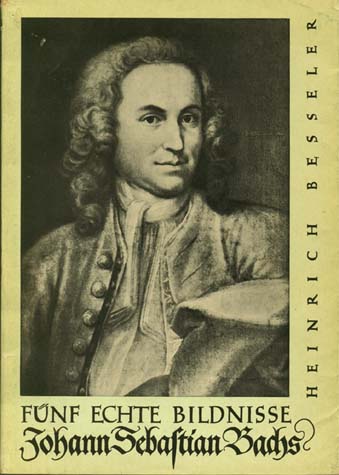
from PAGE 3
The history and the provenance of the painting now became a subject of intense interest. Because it was nearest to hand, I turned first to Werner Neumann's commentary in Bilddokumente zur Lebensgeschichten Johann Sebastian Bachs. This is what I found:
"...Oil on canvas 60x44 cm with no artist's signature, but earlier with the following words on the back in a reputedly original rococo handwriting: 'Joh. Sebast. Bach / geb. d. 21 Mar. 1685 / zu Eisenach'. Found in about 1877 in the attic of a house in Erfurt, owned until 1907 by a master tailor who collected pictures and bought from him by the Angermuseum, the City Museum of Erfurt, renovated and declared by the director Alfred Overmann to be possibly a picture of Bach...." (BDL, p. 403)
In Neumann's subsequent discussion of the controversy that developed about the painting's authenticity, Heinrich Besseler's name looms large, and the Erfurt Portrait is the first of the five portraits that Besseler discusses in his monograph. Naturally, I turned it to his discussion next. His account of the history of the painting provided significantly more detail but no new revelations, with one possible exception. Besseler alludes to the article in Die Musik in which the existence of the portrait was first announced and its identication as a portrait of Bach asserted, and he mentions that the article contains a photograph of the painting as it looked before it was restored.
However, Besseler does not reproduce the photograph in his book, and he does not appear to discuss its potential significance in his examination and evaluation of the Erfurt Portrait. One cannot help but wonder why, especially since there are twelve plates in the book, which means that there was ample room in the budget to allow for the inclusion of the "before" photograph of the Erfurt Portrait. Did Besseler simply rely on the restored painting, believing the photograph of the unrestored canvas of minimal probative value, or did the photograph of the unrestored canvas cause him to have doubts that, under the circumstances, he preferred to ignore? After all, had he decided that he had to exclude the painting from the canon, a thin book would have become even thinner, and the title would have had to have been changed to Vier Echte Bildnisse Johann Sebastian Bachs.
And, at some point, I then realized, I really would have to find out what Museumleiter Prof. Dr. Alfred Overmann had to say about the painting in his article announcing the momentous discovery. [...JI asked Paula if, by some miracle, the Music Library had a copy of the issue of Die Musik in which the existence of the Erfurt Portrait was first announced to the world. (Die Musik was a journal that had extremely high production values; among the classical music periodicals in circulation today, almost a century later, only the early music magazine, Goldberg, equals it in quality.) Mirabile dictu, the Music Library did, and Paula graciously allowed me to borrow that, too.
I turned to Alfred Overmann's article on the Erfurt Portrait. The photo of the unrestored canvass in Heft 6 of the 1907 Die Musik turns out to be somewhat larger than the photo that is the frontispiece of the Beyer monograph, and the photo of the restored canvass, evidently the first and the "official" one, was of equivalent size. I thereupon decided that these two images are about as level a playing ground as any scholar could want, and, unless otherwise stated, all subsequent scans of the Erfurt Portrait are taken from those two 1907 illustrations. So, once more, I returned to the scanning bed. Here are scans of the "before and after" illustrations of the unrestored painting that appear in Heft 6 of the 1907 Die Musik:
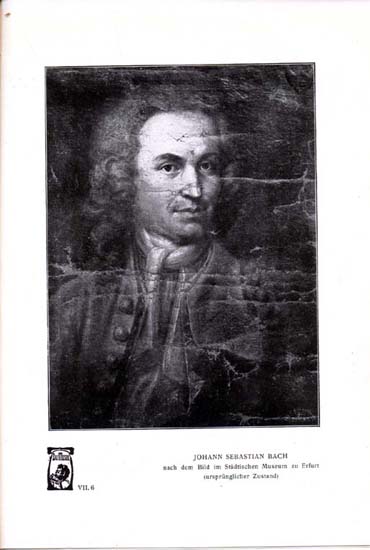
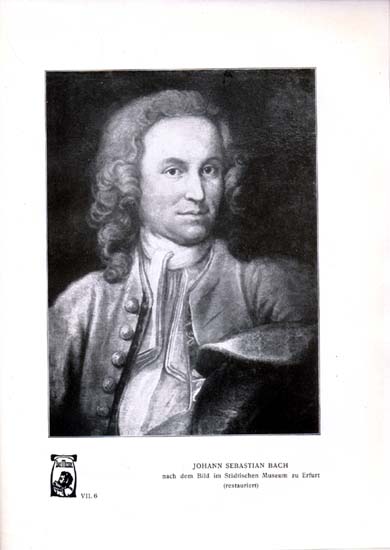
And now, finally, just the faces, without the distraction of hair (whether real or a perruque) and clothing:
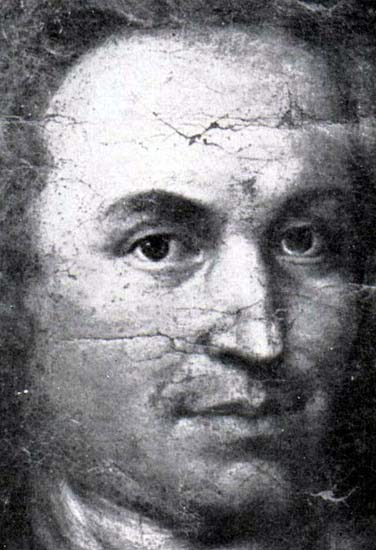

Alas, the verdict is unchanged. The "liberties" taken by the undeniably adept restorer are as apparent as before.
from page 4: Is this young man really Johann Sebastian Bach?
Next, I turned to Prof. Dr. Overmann's short article announcing the existence of the painting: (the three pages of this article - in German - are in a pdf - click the image).
Besseler clearly took his statement of
the provenance directly from Prof. Dr. Overmann's account, but like his
source, Besseler
begs an important question. If the painting had an inscription on the
back in a Rococo hand identifying the subject as Johann
Sebastian Bach, and giving the date and the town of birth as well, why
was that inscription not preserved or, at the very least,
photographed or traced? That the physical evidence of the painting's
provenance was not preserved is suspect, particularly since no
explanation of why it was not preserved is offered.
Throughout the brief article, Prof. Dr. Overmann is careful, however, in
presenting the best case that he can for the authenticity of the painting. Among
other things, he cautiously discusses the possibility that the Erfurt Portrait
is the lost Kittel portrait. Even if it were an accurate depiction of the facial
features of Johann Sebastian Bach, the Erfurt Portrait could not be the portrait
of Bach that belonged to Kittel. Why is explained in detail in the Queens
College Lecture, but suffice it to say that the Erfurt Portrait fails a most
important test, as Dr. Overmann acknowledges near the end of his article: It
does not match the one description that we have of the lost Kittel portrait. In
his 1850 monograph on Bach, Carl Ludwig Hilgenfeldt catalogues the various
portraits of Bach of which he had knowledge. In describing the portrait that
belonged to Kittel, Hilgenfeldt wrote: "... ein Brustbild, Bach im Staatskleide
darstellend". Hilgenfeldt's description of the appearance of the painting that
belonged to Kittel, is, to the best of my knowledge, unique. The specific
statement that the portrait is a bust portrait and, more importantly, that it
depicts Bach in official regalia of one kind or another sets the portrait that
belonged to Kittel apart from every other known authentic image.
Not only is the young man who is depicted
in the Erfurt "Brustbild" not Bach, but also he is not "Bach im
Staatskleide darstellend".
While Prof. Dr. Overmann appears to be quite candid about the damage to the face of the portrait's subject, he is not especially forthcoming with respect to the details of the restoration process. Furthermore, if my reading of the article is correct, he builds his case for the authenticity of the painting referring only to the restored form of the portrait. He does, however, tells us what his absolute standards of comparison are. At the beginning of the last paragraph of the first page of the article, Prof. Dr. Overmann specifically mentions the Haussmann Portrait in the Thomasschule and the skull, which had been exhumed in 1894. The Haussmann Portrait in the Thomasschule, of course, is the 1746 Haussmann Portrait, which, in 1907, still had not been cleansed of all of the overpaint applied to it by the three different restorers who had worked on it during the second half of the 19th century. In 1907, the painting looked like this:
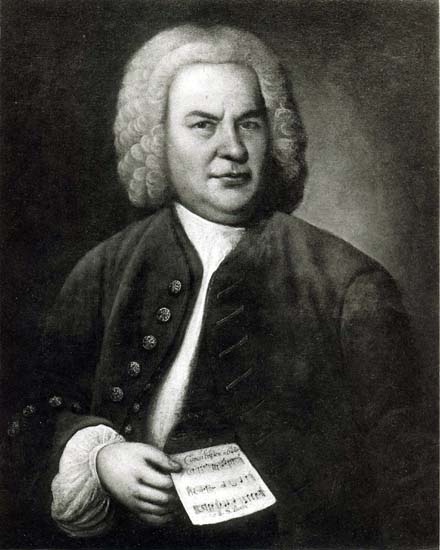
The facial features in Schönfelder's 1895 restoration of the painting were significantly different from those of the 1914 Kuhn restoration, the version with which most of us have been intimately familiar since childhood. Here, on the left, is a close up of the head of the 1746 Haussmann, as restored by Schönfelder in 1895, with the equivalent detail from a 1914 photograph of the portrait after it had been cleaned and restored by Kuhn on the right:
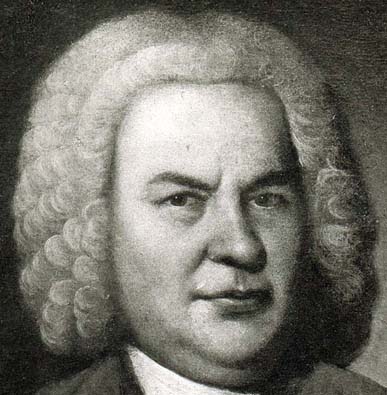



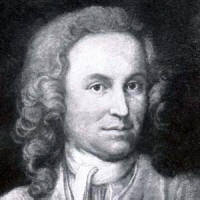 ,
,
the message is clear to all who care to heed it: The outline of the left cheek bone and jaws in the restored form of the Erfurt Portrait has been subtly "adjusted" and carefully and deliberately matched to the outline of the left cheekbone of the 1746 Haussmann Portrait as restored by Schönfelder, a contour that subsequent scholarship and investivation has shown to be an inaccurate and inexact restoration of the original. No matter how well intentioned it may have been (and, as we all know, the road to hell is paved with good intentions!), the subtle "realignment" of the outline of the cheekbone was -- and is -- a deception, a deception that becomes all the more obvious when one substitutes the 1748 Haussmann Portrait (significantly, a painting that Besseler rejects categorically as both unreliable and unauthentic when it is precisely the opposite!) for the 1746 Haussmann Portrait as restored by Schönfelder:

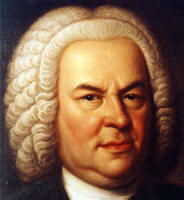

Bach simply did not have the "high" and prominent cheek bones that the as yet unidentified sitter for the Erfurt Portrait had!
from PAGE 6 : THE NOSE
[DW: Images for the nose and jaw were missing, so omittedJ
As we have seen, the nose of the Erfurt Portrait is one of the places where the restorer's "legerdemain" is most egregious. For that reason, for this first comparison, which is designed to show how configuration of the restored nose was determined, I have lined up in a row, the nose of the 1746 Haussmann Portrait as it looked after Schönfelder restored it, the nose of the Bretikopf portrait, the Erfurt Portrait after the 1907 restoration, and finally the nose of the Kütner print. (Both the nose of the Breitkopf Portrait and the nose of the Kütner print have been "flopped" to compensate for the "mirror image" aspects of the originals, which themselves "flop" the 1748 Haussmann Portrait from which they are both ultimately derived. Clearly, in addition to the 1746 Haussmann Portrait as it looked after Schönfelder restored it, which is the only portrait he specifically mentions in his article, Dr. Overmann and his colleagues studied the Breitkopf portrait and the Kütner print very carefully when making the decisions about how the abraded spots on the surface of the canvass would be in-painted. The shape of the left side of the nose and the resulting profile of the nose, particularly the bulge or ridge that begins about one-third of the way down in the restored nose of the Erfurt Portrait clearly owe a great deal to the Breitkopf portrait and the Kütner print and next to nothing to the 1746 Haussmann Portrait as it looked after Schönfelder restored it. But does the unrestored nose of the Erfurt Portrait support such a restoration? It is not "open and shut", but, in all likelihood, the decision of the 1907 restoration team owed much to wishful thinking:


It certainly is possible to argue that
the shape of the nose as originally painted had that depression after
the bulge, but when the
heads in their entirety are compared, that possibility seems much less
of a probability. It is much more likely that the as yet
unidentified sitter for the Erfurt Portrait had a nose with a profile
that was much more aquiline. In this context I cannot help but
recall the words of yet another treasured friend and mentor, Rosalyn
Tureck, the "High Priestess of Bach" as one knoweldgeable
and admiring music critic dubbed her. When I told her the exciting news about
the Weydenhammer Portrait Fragment, a discussion of the various portraits
ensued. Rosalyn forthrightly told me that she had never believed that the Erfurt
Portrait was, in fact, a portrait of Bach and then she gave her reason as she
dismissed it completely. "Bach with an aquiline nose?"
And, now, finally the nose of the Erfurt Portrait, as it looked before it was
restored in 1907, compared to the nose of the 1748 Haussmann Portrait:


Again, it certainly is possible to argue that the shape of the nose as originally painted had that depression after the bulge, but even if it did so, when the heads in their entirety are compared, that possibility seems much less of a probability. The nose of the Erfurt Portrait did not mature into the nose of the 1748 Haussmann Portrait.
PAGE 7 conclusion
No, alas, and it pains me to write it, the Erfurt Portrait is NOT an accurate depiction of the facial features of Johann Sebastian Bach, at any age, much less during his tenure as Concertmeister at the ducal courts in Weimar. Of course, nothing that I write will stop, or even begin to slow down, the circulation of this understandably well-loved painting and its ongoing misidentification as a portrait of a "young" Johann Sebastian Bach. It has become an icon and a ubiquitous one at that.
Just what did Sebastian Bach look like when he got into that street brawl with Geysersbach? Just what did he look like when he married Maria Barbara? Just what did he look like when he vanquished Marchand in Dresden? Just what did he look like when he sat down to the table at that 27dish banquet on May 3, 1716, after proving the organ in the Liebfrauenkirche in Halle? Just what did he look like when he got thrown into jail by Duke Wilhelm Ernst?
For most people who suffer from it, the Erfurt Portrait satisfies the gnawing craving for a "believable" portrait of "that Bach", a young Johann Sebastian Bach. The Erfurt Portrait has metamorphosed from a battered portrait of an unidentifed young 18th century gentleman into a popular, accessible, instantly recognizable image of the "Weimar" Johann Sebastian Bach, an image that lives and that will live, worldwide, auf immer, und ewig, von nun an.
Teri Noel Towe
August 10, 2001
go home or...
|
Erfurt Bach |
Haussmann 1746 overpaint removed |
Haussmann 1748 copy or original? |
Volbach
the old Bach? |
 |
 |
 |
 |
Dick Wursten (dick@wursten.be)

